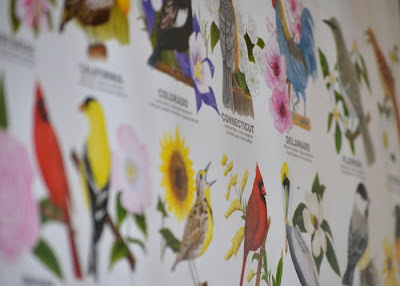Last year, our history covered the 'discovery' of the Americas. It was then that we began a year long study of American geography using Trail Guide to U.S. Geography. The children learned about the various regions of the U.S.A. and the states within these regions. Maps were included every week.
This year, we are making sure we review American geography. I have been using several different resources and ideas to review what they learned last year.
American Geography Ideas:
Using maps from Uncle Josh's Outline Map Book, our children have used maps to count license plates of various states we see as we travel on long trips.
They have also placed free stickers from an advertisement onto the corresponding states of a map.
Making a game with flash cards, the children raced to answer questions about the states. Those state cards which they won, they located and colored on a map.
Later, I quizzed each child individually with the entire packet of flash cards.
Our oldest daughter is currently using Geography: A Literature Approach, by Rea C. Berg (Beautiful Feet Books) with four Holling C. Holling books and Geography-Based Writing Lessons, by Maria Gerber (IEW).
Although American geography is new information to our youngest son, he does enjoy our Melissa and Doug United States of America floor puzzle. It is an easy way to introduce him to the different states and their locations.
American Geography Resources:
Trail Guide to U.S. Geography, by Cindy Wiggers
Children's Illustrated Atlas: United States (Rand McNally Schoolhouse)
Don't Know Much About the 50 States, by Kenneth C. Davis
States & Capitals, pocket flash cards (Trend)
Uncle Josh's Outline Map Book, by George Wiggers and Hannah Wiggers
Unites States of America State Birds and Flowers, poster (Feenixx Publishing, Inc.)









































